What does pap smear test show. Understanding Cervical Cancer Screening: Pap Smears and HPV Tests Explained
What does a Pap smear test show. How often should you get cervical cancer screening. What are the different types of cervical cancer screening tests available. How do you prepare for a Pap smear or HPV test. What do abnormal test results mean.
The Importance of Cervical Cancer Screening
Cervical cancer screening is a crucial preventive measure that can detect early signs of cancer or precancerous conditions. Regular screening has significantly reduced cervical cancer rates by identifying and treating abnormalities before they progress to cancer. There are two primary screening methods: the Pap test (or Pap smear) and the HPV test.
What is a Pap Test?
A Pap test, short for Papanicolaou test, is a procedure that collects cells from the cervix to examine them for abnormalities. During the test, a healthcare provider uses a speculum to view the cervix and collects a sample of cells using a small brush or spatula. These cells are then sent to a laboratory for analysis.

What is an HPV Test?
The HPV test looks for the presence of human papillomavirus, a common sexually transmitted infection that can cause cervical cancer. This test can be performed using the same cell sample collected during a Pap test or as a standalone procedure.
What Does a Pap Smear Test Show?
A Pap smear test primarily shows the presence of abnormal cells on the cervix. These abnormalities can range from mild inflammation to precancerous changes or, in rare cases, cancer cells. Specifically, a Pap test can detect:
- Cervical dysplasia (precancerous changes)
- Cervical cancer
- Cellular changes caused by HPV
- Inflammation or infection
Is a Pap smear able to detect other conditions? While a Pap test is designed to detect cervical abnormalities, it may occasionally reveal signs of other conditions such as vaginal infections or hormonal imbalances. However, it’s important to note that a Pap smear is not a comprehensive test for all gynecological conditions.
Cervical Cancer Screening Guidelines: When and How Often?
The frequency of cervical cancer screening depends on your age and risk factors. Current guidelines recommend:
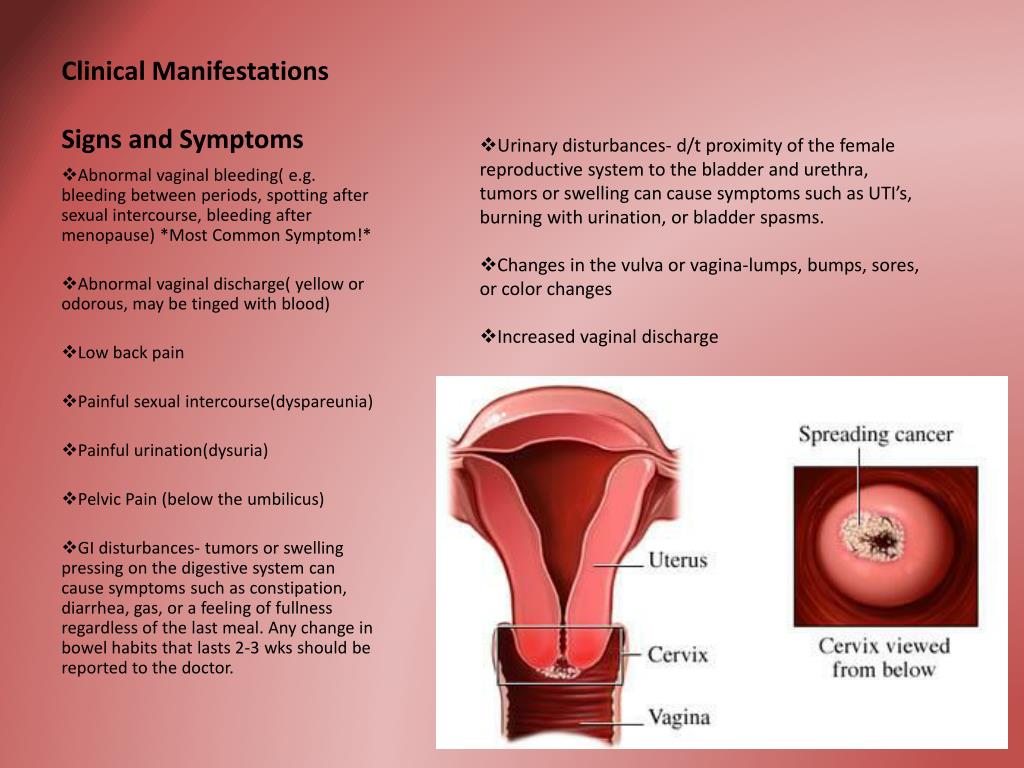
For Women Ages 21-29:
Begin Pap testing at age 21, regardless of sexual history. If results are normal, repeat the test every three years.
For Women Ages 30-65:
You have several options:
- HPV test only (primary HPV testing) every 5 years
- HPV test and Pap test together (co-testing) every 5 years
- Pap test alone every 3 years
How do you decide which screening option is best for you? Discuss with your healthcare provider to determine the most appropriate screening method based on your individual risk factors and medical history.
For Women Over 65:
Screening may be discontinued if you have had consistently normal results for several years and no history of cervical precancer. However, this decision should be made in consultation with your healthcare provider.
Preparing for Your Cervical Cancer Screening
To ensure accurate results from your Pap smear or HPV test, follow these guidelines:
- Avoid sexual intercourse for 2 days before the test
- Don’t use douches, vaginal medications, or spermicidal foams for 2 days prior
- If possible, schedule your test when you’re not menstruating
Can you get a Pap smear during your period? While it’s possible to perform the test during menstruation, it may affect the accuracy of the results. If you unexpectedly start your period, contact your healthcare provider to determine whether to proceed with or reschedule the test.
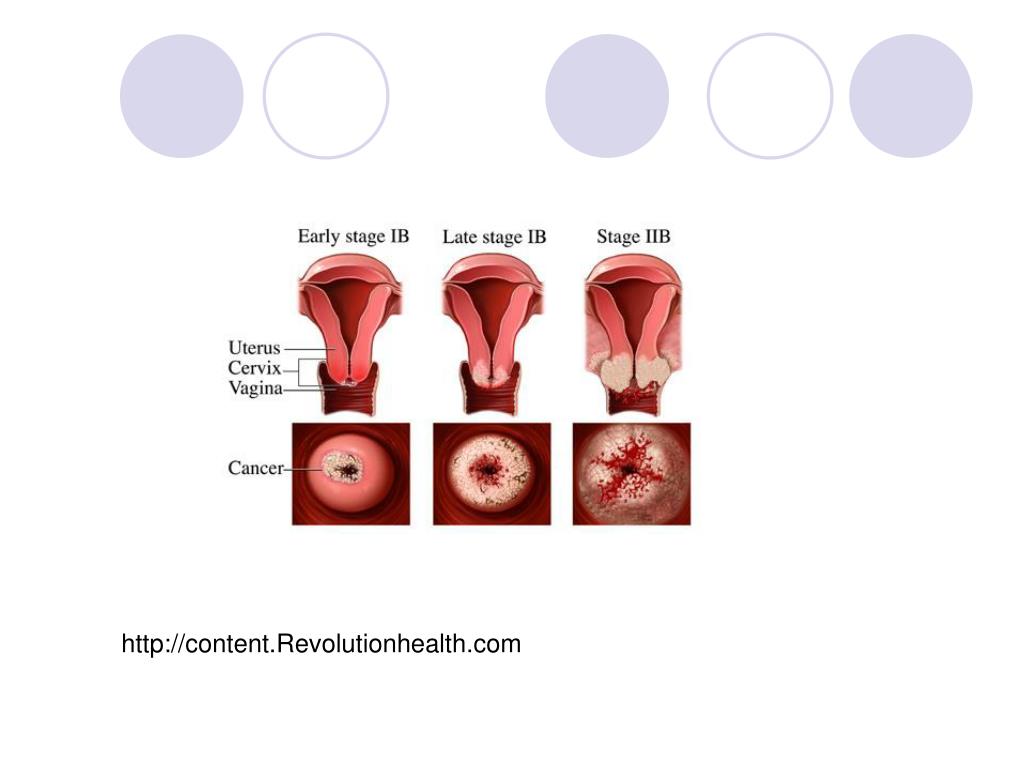
Understanding Your Test Results
After your cervical cancer screening, you’ll typically receive results within three weeks. The possible outcomes include:
Normal Results
If your test results are normal, it means no abnormal cells were detected. This indicates a low risk of cervical cancer in the near future, and you can follow the standard screening schedule recommended by your healthcare provider.
Abnormal Results
Abnormal results don’t necessarily mean you have cancer. There are several reasons why results might be abnormal:
- Mild inflammation
- HPV infection
- Precancerous cell changes
- Rarely, cancer cells
What should you do if you receive abnormal test results? If your results are abnormal, your healthcare provider will contact you to discuss the next steps. This may involve additional testing, such as a colposcopy, or more frequent screening.
The Role of HPV in Cervical Cancer
Human papillomavirus (HPV) is a significant factor in the development of cervical cancer. While there are many types of HPV, only a few high-risk strains are associated with cervical cancer.

HPV Vaccination
HPV vaccination is an effective way to prevent infection with the most common cancer-causing HPV types. The vaccine is recommended for:
- Girls and boys aged 11-12 (can be given as early as age 9)
- Teens and young adults up to age 26 who haven’t been vaccinated
- Some adults between 27 and 45, after discussing with their healthcare provider
Does HPV vaccination eliminate the need for cervical cancer screening? While HPV vaccination significantly reduces the risk of cervical cancer, it doesn’t protect against all cancer-causing HPV types. Therefore, regular screening is still essential, even for those who have been vaccinated.
Advancements in Cervical Cancer Screening Technology
Cervical cancer screening methods continue to evolve, with new technologies aiming to improve accuracy and accessibility. Some recent advancements include:
Liquid-Based Cytology
This method involves preserving the cell sample in a liquid medium, which can improve the quality of the sample and reduce the likelihood of unsatisfactory results.

Computer-Assisted Screening
Artificial intelligence algorithms are being developed to assist in the analysis of Pap smear samples, potentially improving the accuracy and speed of screening.
Self-Sampling HPV Tests
These tests allow women to collect their own samples at home, which may increase screening rates among women who have difficulty accessing healthcare facilities.
How do these new technologies compare to traditional Pap smears? While these advancements show promise, traditional Pap smears and HPV tests remain the gold standard for cervical cancer screening. As research progresses, these new technologies may become more widely adopted, potentially improving the effectiveness of screening programs.
The Impact of Cervical Cancer Screening on Public Health
Cervical cancer screening has had a significant impact on public health since its introduction. Some key benefits include:
- Reduced cervical cancer incidence and mortality rates
- Early detection and treatment of precancerous conditions
- Increased awareness of cervical health and HPV prevention
How has cervical cancer screening changed over time? The introduction of the Pap smear in the 1940s led to a dramatic decrease in cervical cancer rates. The addition of HPV testing has further improved screening effectiveness. Ongoing research continues to refine screening methods and guidelines to maximize benefits while minimizing unnecessary procedures.

Addressing Disparities in Cervical Cancer Screening
Despite the overall success of cervical cancer screening programs, disparities in access and utilization persist. Factors contributing to these disparities include:
- Socioeconomic status
- Race and ethnicity
- Geographic location
- Health literacy
- Cultural beliefs and practices
What strategies can be employed to reduce screening disparities? Efforts to address these disparities may include:
- Community outreach and education programs
- Increased funding for low-cost or free screening services
- Cultural competency training for healthcare providers
- Implementation of mobile screening units in underserved areas
- Expansion of telemedicine services for follow-up care
By addressing these disparities, we can work towards ensuring that all women have access to timely and effective cervical cancer screening.
The Future of Cervical Cancer Prevention
As our understanding of cervical cancer and HPV continues to grow, new approaches to prevention and screening are being developed. Some areas of ongoing research include:

Improved HPV Vaccines
Scientists are working on developing new HPV vaccines that target a broader range of cancer-causing HPV types, potentially offering even greater protection against cervical cancer.
Personalized Screening Approaches
Research is underway to develop more individualized screening strategies based on a woman’s personal risk factors, including HPV vaccination status, genetic predisposition, and lifestyle factors.
Novel Biomarkers
Researchers are investigating new biomarkers that could help identify women at higher risk of developing cervical cancer, potentially allowing for more targeted screening and prevention efforts.
How might these advancements change cervical cancer screening in the future? As these new technologies and approaches are developed and validated, we may see changes in screening guidelines and practices. This could lead to more efficient and effective cervical cancer prevention strategies, further reducing the burden of this disease.
The Role of Patient Education and Empowerment
As cervical cancer screening continues to evolve, patient education and empowerment will play an increasingly important role. Key aspects of this include:
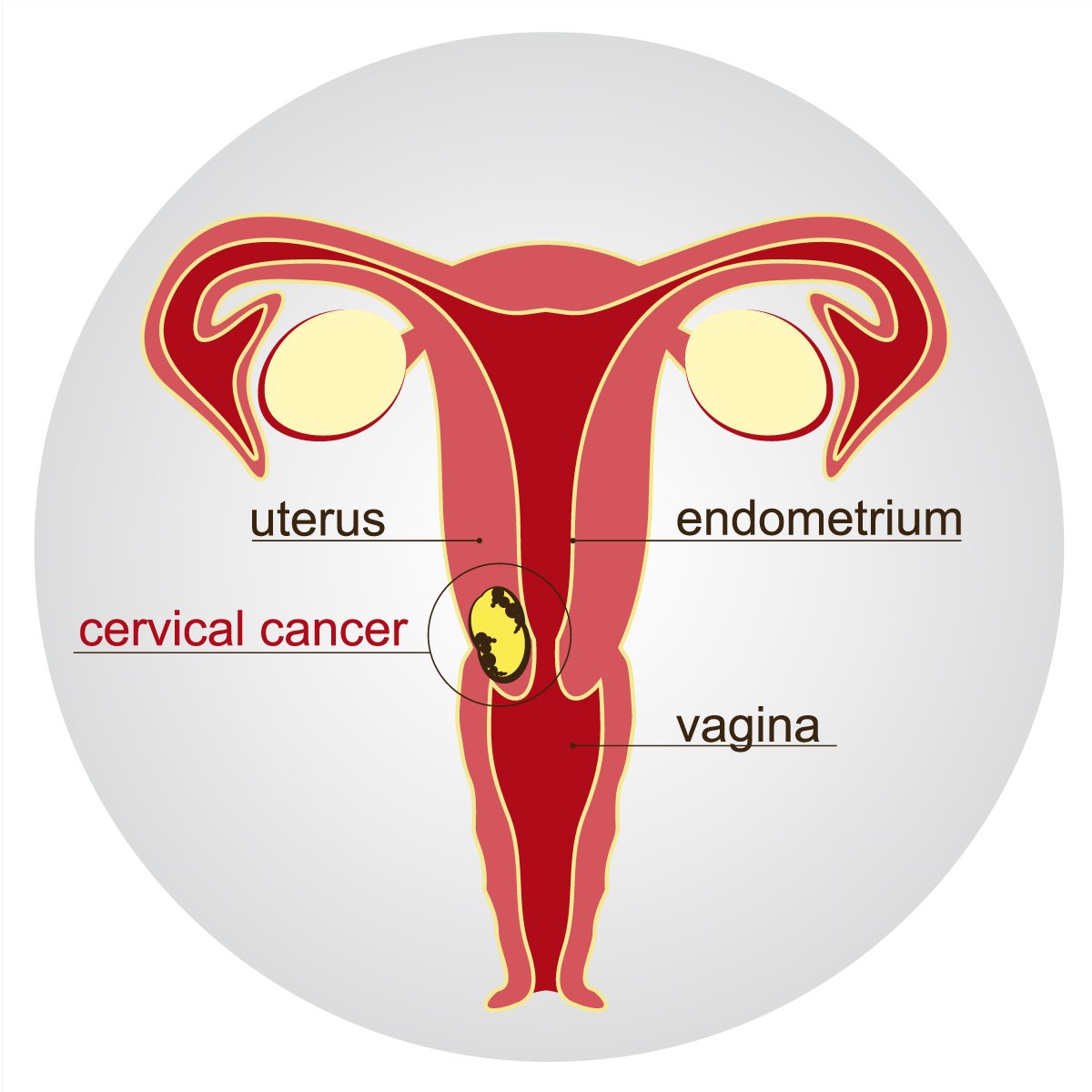
- Promoting awareness of the importance of regular screening
- Educating women about HPV and its role in cervical cancer
- Encouraging open communication between patients and healthcare providers
- Empowering women to take an active role in their cervical health
How can healthcare providers and public health organizations promote patient engagement in cervical cancer prevention? Strategies may include:
- Developing user-friendly educational materials
- Utilizing social media and digital platforms to reach younger populations
- Incorporating cervical health education into school health curricula
- Providing culturally sensitive and linguistically appropriate information
- Offering patient navigation services to help women access screening and follow-up care
By focusing on patient education and empowerment, we can help ensure that women are informed and motivated to participate in regular cervical cancer screening, ultimately contributing to better health outcomes.
What Should I Know About Cervical Cancer Screening?
Español (Spanish) | Print
“If I didn’t go to that appointment, I might not be around for my kids,” says Cindy. Her cervical cancer screening test found precancerous cells. She shares her story in this video.
The HPV test and the Pap test can help prevent cervical cancer or find it early.
- The HPV test looks for the virus (human papillomavirus) that can cause cell changes on the cervix.
- The Pap test (or Pap smear) looks for precancers, cell changes on the cervix that might become cervical cancer if they are not treated appropriately.
Both tests can be done in a doctor’s office or clinic. During the Pap test, the doctor will use a plastic or metal instrument, called a speculum, to look inside your vagina. This helps the doctor examine the vagina and the cervix, and collect a few cells and mucus from the cervix and the area around it. The cells are sent to a laboratory.
- If you are getting a Pap test, the cells will be checked to see if they look normal.
- If you are getting an HPV test, the cells will be tested for HPV.
What is cervical precancer? When there are cervical cells that look abnormal but are not yet cancerous, it is called cervical precancer. These abnormal cells may be the first sign of cancer that develops years later. Cervical precancer usually doesn’t cause pain or other symptoms. It is found with a pelvic exam or a Pap test.
If you have a low income or do not have health insurance, you may be able to get a free or low-cost screening test through the National Breast and Cervical Cancer Early Detection Program.
Find out if you qualify
When to Get Screened
If You Are 21 to 29 Years Old
You should start getting Pap tests at age 21. If your Pap test result is normal, your doctor may tell you that you can wait three years until your next Pap test.
If You Are 30 to 65 Years Old
Talk to your doctor about which testing option is right for you—
- An HPV test only.
 This is called primary HPV testing. If your result is normal, your doctor may tell you that you can wait five years until your next screening test.
This is called primary HPV testing. If your result is normal, your doctor may tell you that you can wait five years until your next screening test. - An HPV test along with the Pap test. This is called co-testing. If both of your results are normal, your doctor may tell you that you can wait five years until your next screening test.
- A Pap test only. If your result is normal, your doctor may tell you that you can wait three years until your next Pap test.
If You Are Older Than 65
Your doctor may tell you that you don’t need to be screened anymore if—
- You have had normal screening test results for several years, and
- You have not had a cervical precancer in the past, or
- You have had your cervix removed as part of a total hysterectomy for non-cancerous conditions, like fibroids.
No special preparation is needed before you have an HPV test.
If you are getting a Pap test, you can take steps to make sure the test results are accurate. Avoid intercourse, douching, and using vaginal medicines or spermicidal foam for 2 days before the test. If you had sex before the test, go to the appointment as planned and let the doctor know.
Avoid intercourse, douching, and using vaginal medicines or spermicidal foam for 2 days before the test. If you had sex before the test, go to the appointment as planned and let the doctor know.
If you have your period, don’t worry. Both tests can still be done at this time.
Test Results
It can take as long as three weeks to receive your test results. If your test shows that something might not be normal, your doctor will contact you and figure out how best to follow up. There are many reasons why test results might not be normal. It usually does not mean you have cancer.
If your test results show cells that are not normal and may become cancer, your doctor will let you know if you need to be treated. In most cases, treatment prevents cervical cancer from developing. It is important to follow up with your doctor right away to learn more about your test results and receive any treatment that may be needed.
If your test results are normal, your chance of getting cervical cancer in the next few years is very low. Your doctor may tell you that you can wait several years for your next cervical cancer screening test. But you should still go to the doctor regularly for a checkup.
Your doctor may tell you that you can wait several years for your next cervical cancer screening test. But you should still go to the doctor regularly for a checkup.
What Does a Pap Test Detect?
Updated November 2022
Its real name: Papanicolaou test. There’s a good chance you know it as a Pap smear, or more appropriately, a Pap test. Discover the science behind this test — including what it doesn’t detect.
The Science Behind the Test
A Pap test is when a clinician takes a sample of cells from your cervix (the lower part of the uterus neck located at the top of the vagina). Then, they put the cells into small jar with a special liquid to preserve the sample so it can be tested for abnormalities under a microscope.
There are many reasons why you may have abnormal findings, such as:
- Mild inflammation
- Human papillomavirus (HPV)
- Cancer or precancer
Cervical cancer, if caught early, is highly treatable.
— Melissa A. Simon, MD
“The Pap test can detect changes in cells that could be concerning for possible cervical cancer or precancerous changes,” says Melissa A. Simon, MD, an obstetrician and gynecologist at Northwestern Medicine.
Abnormal test results will indicate a number of atypical squamous cells, which will then be classified as low-grade or high-grade squamous intraepithelial lesions (LSIL and HSIL, respectively). LSIL indicates that the changes are mildly abnormal and usually caused by HPV infection, and they may go away on their own. HSIL suggests more serious changes.
“Cells that are determined to be atypical of undetermined significance basically reveal slightly abnormal cells, and it does not clearly mean precancer is there. Usually, these test results indicate to follow up in a year,” says Dr. Simon.
Abnormal Pap test results are typically caused by HPV. HPV is a sexually transmitted infection (STI) that enters cells and changes them. HPV can be prevented by getting the vaccine, which targets the HPV types that most commonly cause certain types of cancer and genital warts. Certain high-risk types of HPV are associated with an increased risk for the following types of cancer:
HPV can be prevented by getting the vaccine, which targets the HPV types that most commonly cause certain types of cancer and genital warts. Certain high-risk types of HPV are associated with an increased risk for the following types of cancer:
- Cervical
- Vulva
- Vagina
- Penis
- Anus
- Mouth and throat cancer
Depending on your Pap test results, your physician will determine the appropriate next steps. This can include another test, known as a colposcopy, which uses a special camera to look at your cervix. During this procedure, a biopsy of cells on your cervix may be taken for further analysis. Your physician may also opt for a loop electrosurgical excision procedure, known as LEEP, if there are more concerning findings or repeated abnormal Pap test results. A LEEP removes part of your cervix tissue for diagnosis and/or treatment.
What It Can’t Determine
Although Pap tests can help detect precancerous cells on the cervix, there are other types of gynecologic cancers that Pap tests cannot detect.
Because your ovaries are far away from your cervix, it is extremely unlikely that a Pap test will detect ovarian cancer. For that to happen, the cancer cells would have to travel away from your ovaries, through your fallopian tubes and uterus, and into the area surrounding your cervix.
The Pap test is also limited in detecting other types of STIs. If you are concerned you may have a STI, you should ask your clinician to screen for specific STIs.
Pap Tests Are Part of Routine Screening
The U.S. Preventive Services Task Force (USPSTF) and the American College of Obstetricians and Gynecologists (ACOG) both suggest starting screening at age 21. However, the American Cancer Society suggests that cervical cancer screening begin at age 25.
Dr. Simon explains that there are many nuances and complexities of when to start screening and how frequently screening should be done. Cervical cancer can also take a long time to develop, which could explain the varying guidelines.
Screening with a Pap test every three years during this time period is acceptable. However, other types of screening include primary HPV testing every five years. If primary HPV testing is not available, screening may be performed with co-testing that combines an HPV test with a Pap test every five years.
“If you have vaginal discharge, abnormal bleeding or are feeling pain, schedule a visit with your healthcare clinician to discuss these symptoms,” says Dr. Simon. “It’s important that if you are ever in any doubt of what you are feeling or experiencing, and are questioning if you need screening or a test, always reach out to your care team so you can have that conversation.”
The USPSTF, ACOG and American Cancer Society agree that people older than 65 do not need to be screened if adequate prior screening has been completed with normal results and if there is no history or high risk of cervical cancer. Dr. Simon recommends talking to your primary care clinician about your individual risks and recommendations for screening.
Bottom Line
The Pap test is a screening tool that can help detect abnormal cells on your cervix. This early detection can be important in stopping precancerous cells from progressing to cervical cancer.
“Cervical cancer, if caught early, is highly treatable. And that’s why engaging in routine screening is very important,” says Dr. Simon. “Between the HPV vaccine and routine testing, this type of cancer really should be nonexistent.”
Cytological examination of smears (scrapings) from the surface of the cervix (external uterine os) and cervical canal
Cytological examination using a special method of staining the material, which makes it possible to detect atypical cells in a smear with high sensitivity and diagnose early precancerous changes in the epithelium and cervical cancer .
Synonyms Russian
Papanicolaou smear, Pap test, smear for oncocytology.
Synonyms English
Pap smear, Papanicolaou Smear; Cervical Smear; Cervical Oncocytology.
Research method
Cytological method.
What biomaterial can be used for research?
Smear from the outer surface of the cervix, swab from the inner surface of the cervix (from the cervical canal).
General information about the study
Cervical cancer (CC) is the 3rd most common malignant tumor in women (after breast cancer and colon cancer). The incidence of invasive cervical cancer in the world is 15-25 per 100,000 women. Neoplasms of the cervix occur mainly in middle-aged women (35-55 years), are rarely diagnosed under 20 years of age and in 20% of cases are detected over the age of 65 years.
The 5-year survival rate for localized (local, in situ) cervical cancer is 88%, while the survival rate for advanced cancer does not exceed 13%.
Risk factors for cervical cancer include infection with the human papillomavirus (oncogenic serotypes HPV16, HPV18, HPV31, HPV33, HPV45, etc. ), smoking, chlamydial or herpetic infection, chronic inflammatory gynecological diseases, long-term use of contraceptives, repeated births , cases of cervical cancer in the family, early onset of sexual activity, frequent change of sexual partners, insufficient dietary intake of vitamins A and C, immunodeficiencies and HIV infection.
), smoking, chlamydial or herpetic infection, chronic inflammatory gynecological diseases, long-term use of contraceptives, repeated births , cases of cervical cancer in the family, early onset of sexual activity, frequent change of sexual partners, insufficient dietary intake of vitamins A and C, immunodeficiencies and HIV infection.
According to international recommendations, all women should be screened (pre-symptomatic) for cervical cancer 3 years after the onset of sexual activity, but no later than 21 years. Starting at age 30, patients who have had 3 consecutive negative cervical smear results may be screened every 2-3 years. Women with risk factors (human papillomavirus infection, immunocompromised conditions) should continue annual screening. Women 65 years of age or older with 3 or more normal cervical smear results in the last 10 years may not be screened. For those who have recovered from cervical cancer, who have a papillomavirus infection or who have a weakened immune system, it is advisable to continue screening. Women who have had their uterus and cervix removed may not have this test if the operation was not due to cancer or a pre-cancerous condition of the cervix. Those who have had uterine-only surgery without cervical removal should continue to participate in screening.
Women who have had their uterus and cervix removed may not have this test if the operation was not due to cancer or a pre-cancerous condition of the cervix. Those who have had uterine-only surgery without cervical removal should continue to participate in screening.
Cytological examination of material from the cervix and external uterine os, stained according to the Papanicolaou method in compliance with the test procedure and conditions for preparing for analysis, allows with high sensitivity and reliability to identify atypical cells in the material, precancerous conditions (dysplasia, intraepithelial neoplasia of the cervix) . Most often, biomaterial obtained using a special cytobrush from two points (endocervix and exocervix epithelium) and fixed on a glass slide is examined 96% alcohol. Material from the transformation zone should get into the smear, since about 90% of neoplastic conditions come from the junction zone of the squamous and columnar epithelium, and only 10% from the columnar.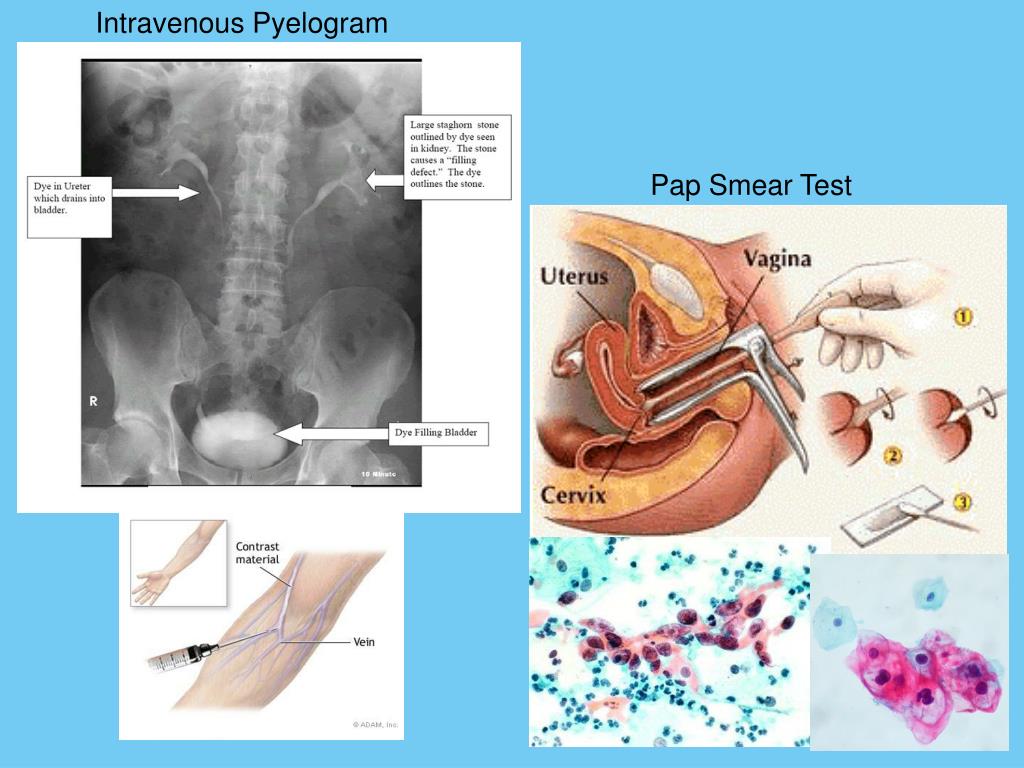 In this study, signs of the presence of infection, pathology of the endocervix and endometrium can also be detected.
In this study, signs of the presence of infection, pathology of the endocervix and endometrium can also be detected.
Screening and early diagnosis of precancerous conditions and early stages of cervical cancer allows for timely effective treatment and prevention of dangerous consequences.
What is research used for?
- For screening and diagnosis of cervical precancerous lesions.
- For screening and diagnosis of cervical cancer.
When is the test ordered?
- When periodically examining girls and women 3 years after the onset of sexual activity, but no later than 21 years (it is recommended to take an analysis annually and at least every 3 years).
- Every 2-3 years from age 30 to age 65 with three consecutive negative results.
- Yearly in the presence of human papillomavirus (HPV), immune system weakened by transplantation, chemotherapy, or long-term use of steroid hormones.

What do the results mean?
Bethesda ” The 2001 Bethesda System termin ology ”
1. Material quantity
- Complete material (adequate) – a good quality smear containing a sufficient amount of the appropriate cell types is considered a complete material.
- The material is insufficiently complete (insufficiently adequate) – there are no endocervix cells and/or metaplastic cells in the material, squamous epithelial cells are in sufficient quantity, or the cellular composition is poor.
- The material is defective (inadequate) – it is impossible to judge the presence or absence of pathological changes in the cervix from the material.
2. Interpretation of results:
- Negative Pap test – epithelial cells are within normal limits, the cytogram corresponds to age, normal.
- Benign changes – the presence of non-tumor cells, signs of inflammation (increased number of leukocytes), infection (a significant number of cocci, rods).
 It is possible to detect infectious agents (indicating the pathogen), for example Trichomonas, yeast.
It is possible to detect infectious agents (indicating the pathogen), for example Trichomonas, yeast. - Changes in squamous epithelial cells (require increased attention, additional examination and treatment if precancer or cancer is detected):
- Atypical squamous cells undertermined significance (ASC-US)
- Atypical squamous cells cannot exclude (HSIL ASC-H)
- Squamous intraepithelial lesion (SIL)
- Low grade squamous intraepithelial lesion (LSIL)
- High grade squamous intraepithelial lesion (HSIL)
- Cervical intraepithelial neoplasia grade 1, 2 or 3, CIN 1, 2, 3
- Carcinoma in situ (CIS)
- Squamous cell carcinoma – invasive cancer
- Changes in glandular cells (require increased attention, additional examination and treatment if precancer or cancer is detected):
- Atypical glandular cells (AGC)
- Atypical glandular cells, favor neoplastic, AGC, favor neoplastic
- Adenocarcinoma
Testing for oncogenic human papillomavirus serotypes is recommended if minimal changes or atypical cells of unclear significance are detected.
What can influence the result?
In girls younger than 20 years, false-positive results are possible due to the presence of changes in the epithelium against the background of transient hormonal disorders.
Important Notes
- There is a possibility of a negative test result with changes in the epithelium in the cervix, so it is important to have regular re-examinations.
Also recommended
- Cytological examination of smears (scrapings) from the surface of the cervix (external uterine os) and cervical canal for atypia
- Squamous cell carcinoma antigen (SCCA)
- Human Papillomavirus of high carcinogenic risk (types 16, 18, 31, 33, 35, 39, 45, 51, 52, 56, 58, 59), DNA genotyping [real-time PCR]
- Human Papillomavirus of high carcinogenic risk (types 16, 18, 31, 33, 35, 39, 45, 51, 52, 56, 58, 59), DNA quantification, no typing [real-time PCR]
Who orders the examination?
Gynecologist, oncologist.:max_bytes(150000):strip_icc()/cervical-cancer-diagnosis-5b647ce246e0fb0025341fff.png)
Literature
- Apgar BS, Zoschnick L, Wright TC (November 2003). “The 2001 Bethesda System terminology”. Am Fam Physician 68(10): 1992-8. PMID 14655809.
- Arbyn M. et al. (2010). “European Guidelines for Quality Assurance in Cervical Cancer Screening. Second Edition – Summary Document”. Annals of Oncology 21(3): 448–458.
- American College of Obstetricians and Gynecologists, “ACOG Committee Opinion No. 483: Primary and Preventive Care: Periodic Assessments,” 2011, Obstet Gynecol, 2011, 117(4):1008-15. PubMed 21422880.
- Novik VI Epidemiology of cervical cancer, risk factors, screening.
How to read a Pap test report
What is a Pap test?
The Pap test is a screening test that looks for abnormal cells in the vaginal part of the cervix. It is called a screening test because it is designed to detect a disease before a person develops any symptoms. The test was named after Dr. Georgios Papanikolaou, who invented the test with Dr.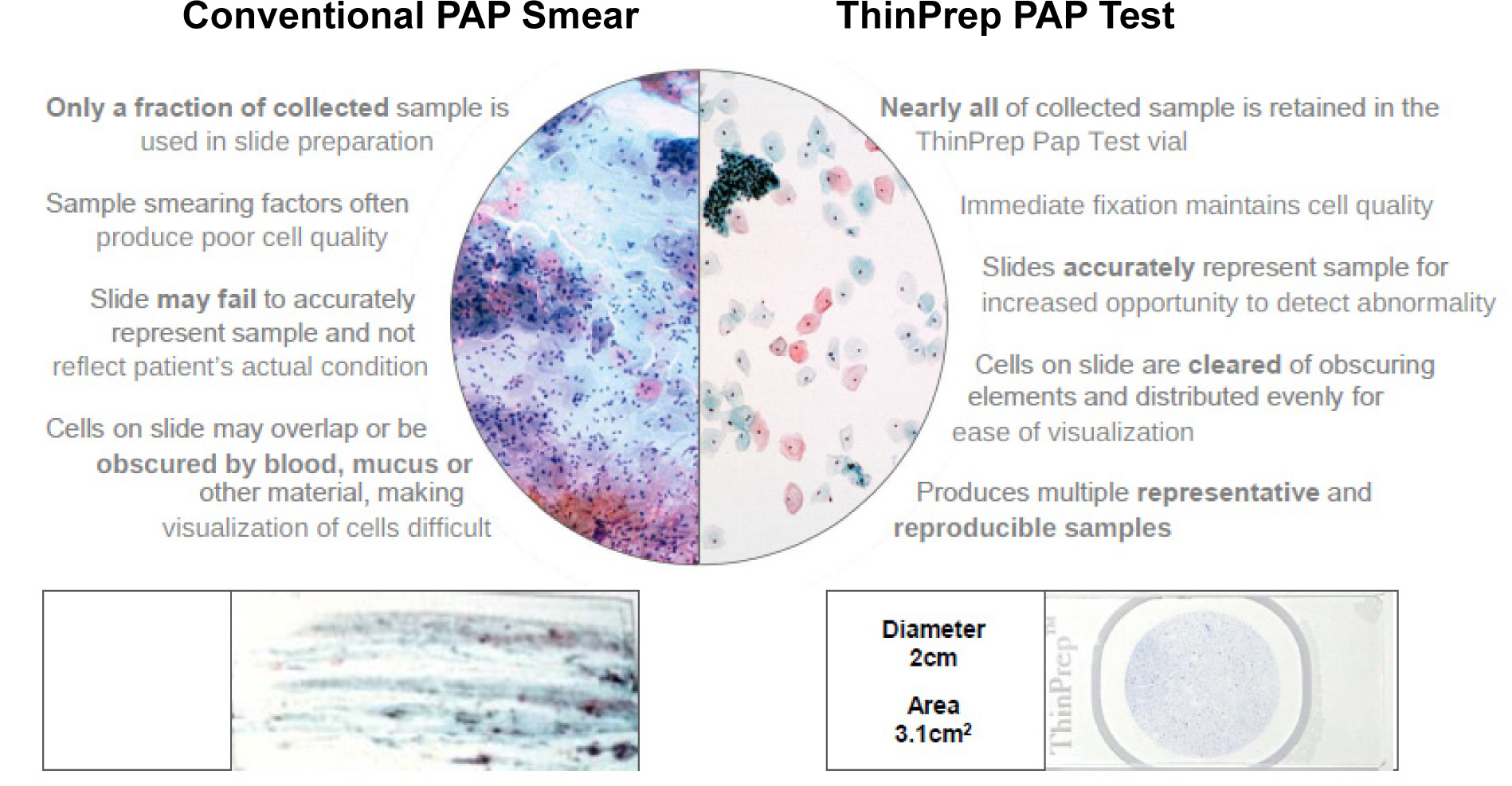 Aurel Babes in the early 20th century. Other names for this test are Pap smear and cervical smear.
Aurel Babes in the early 20th century. Other names for this test are Pap smear and cervical smear.
Why is a Pap smear performed?
The purpose of a Pap smear is to detect precancerous lesions of the cervix. These precancerous conditions can develop into cancer over time, so it is important to identify and treat them as early as possible. A Pap test can also detect abnormal cells coming from the endocervical canal or endometrium.
The most common cervical cancer is squamous cell carcinoma. This type of cancer develops from a precancerous condition called squamous intraepithelial lesion (HSIL). The Pap test is designed to detect both squamous cell carcinoma and HSIL.
A Pap test can also detect infectious organisms, including Candida species, Trichomonas vaginalis, actinomycete species, herpes virus, and cytomegalovirus.
Continue reading to learn more about the Pap test and how to read Pap test results.
Cervix
The uterus is a pear-shaped hollow female reproductive organ located in the small pelvis. The upper part of the uterus is called the corpus (body of the uterus) and the lower part is called the cervix (cervix). The body is made up of muscles that form a cavity called the endometrium. The endometrium is lined with the endometrium of the gland and stroma.
The upper part of the uterus is called the corpus (body of the uterus) and the lower part is called the cervix (cervix). The body is made up of muscles that form a cavity called the endometrium. The endometrium is lined with the endometrium of the gland and stroma.
The cervix is located at the top of the vagina. The narrow passage that runs through the cervix and connects the endometrium and vagina is called the endocervical canal. Part of the cervix in the vagina is lined with special cells called squamous cells. These cells form a barrier called the epithelium that protects the cervix. The endocervical canal is lined with a different type of cells that fuse to form the endocervical canal. glands. The endometrium is also lined with glands that change during the menstrual cycle. The tissue between the glands is called the stroma.
What causes cervical cancer?
Most cervical cancers and precancerous conditions are caused by a virus called human papillomavirus (HPV). The virus infects cells on the surface of the cervix, causing them to turn into cancerous cells over time. The same virus causes cancer and precancerous conditions in other parts of the body, including the throat, anal canal, vulva, and penis.
The virus infects cells on the surface of the cervix, causing them to turn into cancerous cells over time. The same virus causes cancer and precancerous conditions in other parts of the body, including the throat, anal canal, vulva, and penis.
How is a Pap smear performed?
A Pap test is usually done in a doctor’s office by a family doctor, gynecologist, or trained nurse. You will be asked to lie on your back on the examination table with your knees bent. The doctor will use a medical device called a speculum to see your cervix. Small tissue samples will then be taken from the cervix using a soft brush and a scraping device called a spatula. For most patients, the procedure only takes a couple of minutes.
Who should be tested?
Pap smear screening for sexually active women should begin at age 21. For women who have never been sexually active, screening should be delayed until they are sexually active. Sexual activity includes sexual intercourse and digital or oral sexual activity in the genital area with a partner of either gender. If no abnormal cells are found, the test should be repeated every 3 years. A woman may stop testing at age 70 if all of her tests in the previous 10 years have been negative.
If no abnormal cells are found, the test should be repeated every 3 years. A woman may stop testing at age 70 if all of her tests in the previous 10 years have been negative.
The Pap test is safe and effective even if you are pregnant. Pregnant women should be screened according to the same guidelines as non-pregnant women. Women who have had their uterus removed and transgender men who still have a cervix should be screened according to the same guidelines. Immunocompromised women (HIV+, immunosuppressive therapy, autoimmune diseases) should have an annual Pap smear.
In some cases, a Pap smear can be used to obtain a sample from the vagina, because the walls of the vagina are lined with the same type of cells as the vaginal cervical medicines. The same precancerous conditions can be found in the vagina.
* These recommendations are based on the Ontario Cervical Screening Recommendation. Rules may vary slightly in other provinces.
What are the possible results of a Pap smear?
In Canada and the United States, Pap smear results are divided into three categories:
- normal
- Abnormal
- inadequate
normal
If your Pap test is normal, your result will be negative for intraepithelial injury or malignancy. To make this diagnosis, normal cells must be seen. Your doctor will schedule your next scheduled Pap test according to local guidelines.
To make this diagnosis, normal cells must be seen. Your doctor will schedule your next scheduled Pap test according to local guidelines.
Abnormal
There are three possible types of abnormal results depending on what the pathologist sees when they examine your Pap smear under a microscope.
Three types of anomalies are divided into the following groups:
- Crayfish
- Precancerous diseases
- Preliminary results
Each type of anomalous result is explained in more detail in the sections below.
Cancers
This group includes both cervical cancer and endometrial cancer. A Pap smear rarely reveals another type of cancer.
The following results are cancer types:
- Squamous cell carcinoma.
- adenocarcinoma.
- Endocervical carcinoma in situ.
- Other malignant neoplasm.
The result of cancer requires immediate treatment. Contact your doctor if you receive a cancer result and do not receive information about the next steps in a timely manner.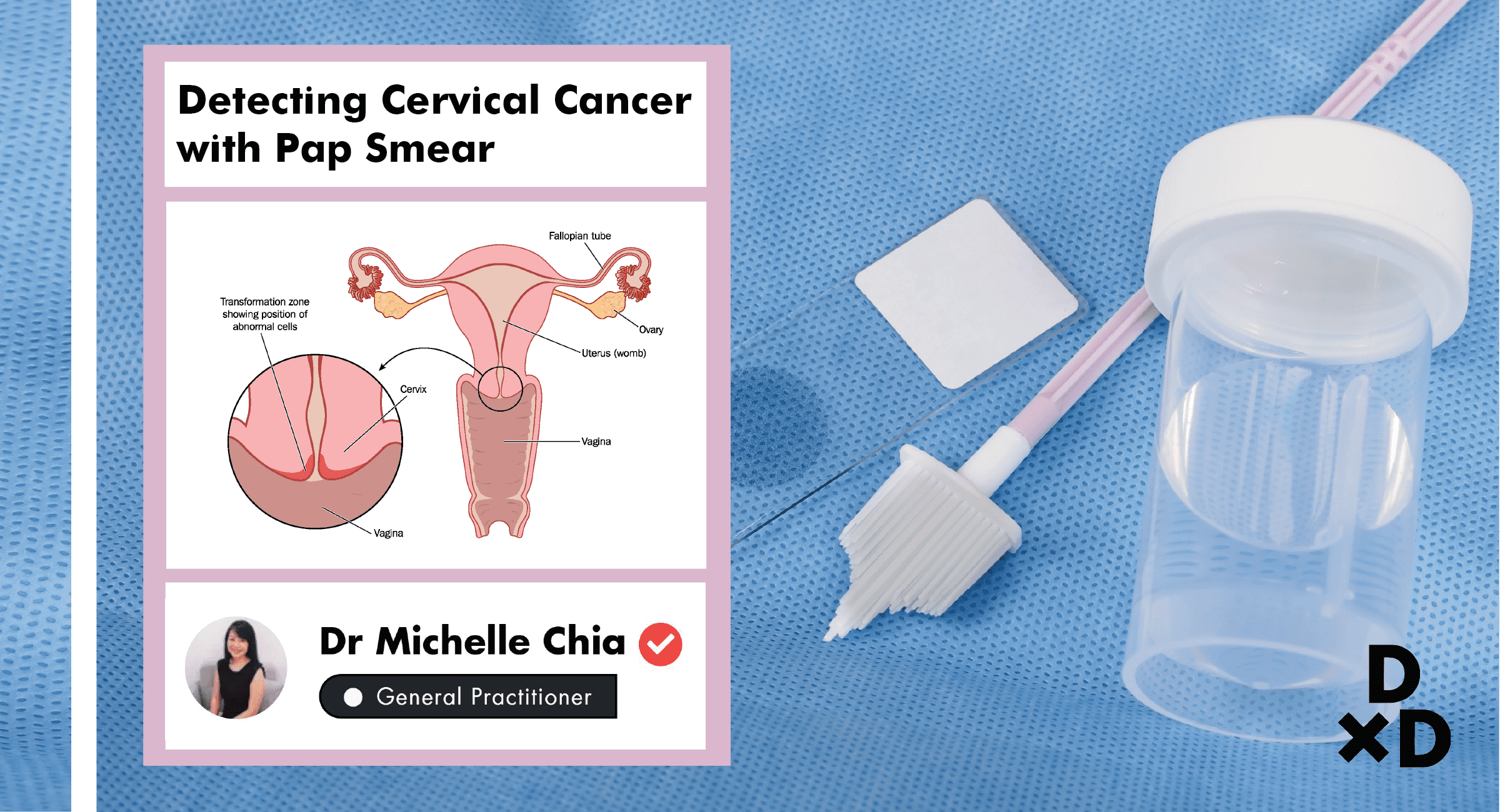
Precancerous conditions
A precancerous condition is a condition that, if left untreated, can turn into cancer over time. The Pap test is designed to detect two precancerous lesions of the cervix. Both of these diseases are caused by the human papillomavirus (HPV).
- Low grade squamous intraepithelial lesion (LSIL).
- High-grade squamous intraepithelial lesion (HSIL).
The risk of cancer is higher in patients with HSIL. If you get an HSIL result, your doctor will discuss your treatment options with you. The risk of cancer is lower in patients with LSIL, although your doctor will talk with you about having a second Pap test.
Preliminary result
Preliminary result means that abnormal cells were found in your Pap smear, but these changes were not enough to make a definitive diagnosis. A preliminary result does not indicate the presence of cancer, but some preliminary results indicate the possibility that precancerous disease or cancer may be present in the cervix.
- ASC-US – Atypical Squamous Cells of Undetermined Significance (ASC-US)
- Atypical squamous cells, cannot rule out high-grade squamous intraepithelial lesion (ASC-H)
- Atypical glandular cells unless otherwise noted (NOS)
- Atypical glandular cells, favors tumors
- Atypical endocervical cells, not otherwise specified (NOS)
- Atypical endocervical cells preferring neoplastic
- Atypical endometrial cells, not otherwise specified (NOS)
You should talk to your doctor about any of the above prior abnormal findings. In most situations, additional tests, such as a colposcopy or a repeat Pap smear, will be recommended.
inadequate
Rarely, a Pap test result may be described as inadequate. This means that your pathologist was unable to make a diagnosis based on the tissue obtained for examination. Common reasons for this include low cell numbers, poor cell preservation, obstructive elements such as blood, and tissue processing errors.

 This is called primary HPV testing. If your result is normal, your doctor may tell you that you can wait five years until your next screening test.
This is called primary HPV testing. If your result is normal, your doctor may tell you that you can wait five years until your next screening test.

 It is possible to detect infectious agents (indicating the pathogen), for example Trichomonas, yeast.
It is possible to detect infectious agents (indicating the pathogen), for example Trichomonas, yeast.